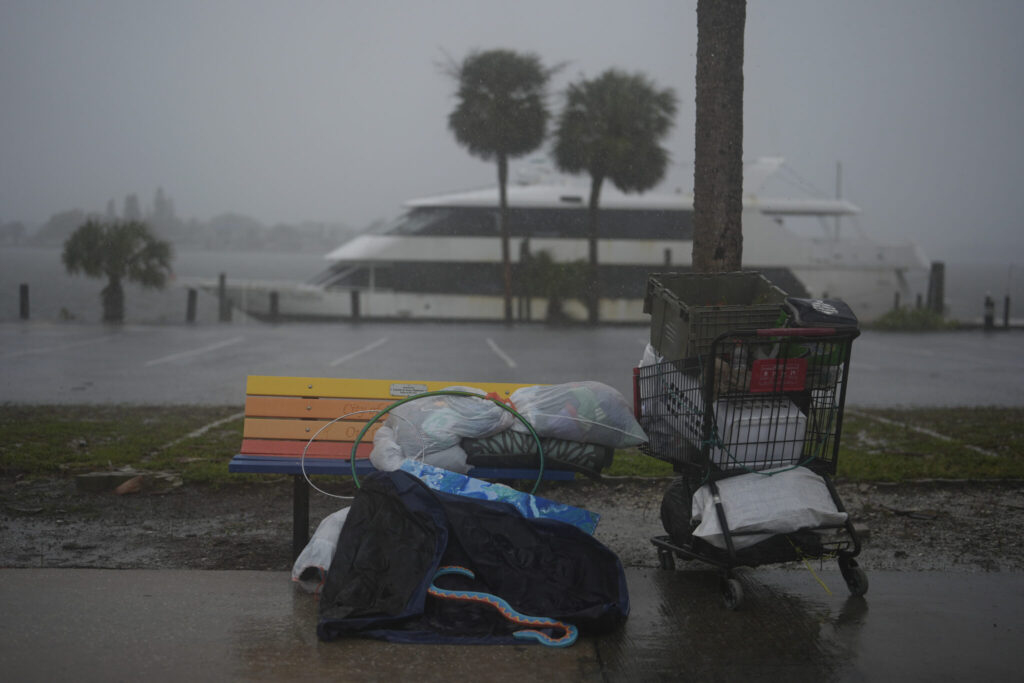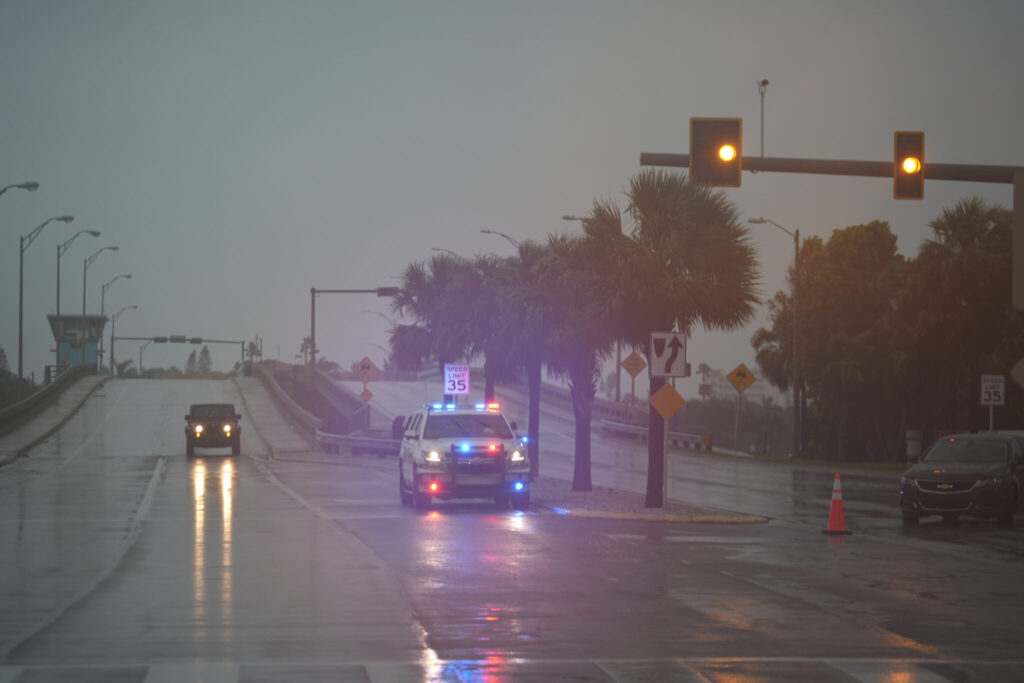Hurricane Milton/ Florida storm surge/ Tampa hurricane warning/ Gulf Coast evacuation/ travel closures Florida/ Newslooks/ FLORIDA/ J. Mansour/ Morning Edition/ Hurricane Milton, currently a Category 4 storm, is approaching Florida’s Gulf Coast and is expected to make landfall late Wednesday. Officials warn of dangerous storm surges, flooding, and severe winds, urging millions to evacuate. With the storm projected to impact central Florida and the Tampa Bay area, local airports and theme parks have closed, and emergency preparations are in full force.

What You Need to Know About Hurricane Milton’s Approach to Florida’s Gulf Coast – Quick Looks
- Landfall Timing: Expected late Wednesday along Florida’s Gulf Coast.
- Storm Strength: Category 4 with sustained winds of 145 mph.
- Evacuation Orders: Tampa Bay area, vulnerable areas evacuated; officials urge immediate action.
- Travel Impact: Airports and theme parks have closed; flights are grounded.
- Storm Surge Risk: Potential surge up to 12 feet in Tampa Bay.
Hurricane Milton Cat. 4 Nears Florida: What You Need to Know
Deep Look
Hurricane Milton is rapidly closing in on Florida’s Gulf Coast as a powerful Category 4 storm, prompting widespread evacuation orders and intensive preparations along the state’s densely populated Gulf region. Officials stress that the storm presents a life-threatening danger to those remaining in vulnerable areas, especially as Milton’s storm surge and high winds threaten severe flooding.
Landfall Expected Late Wednesday
Florida officials expect Hurricane Milton to make landfall late Wednesday, potentially one of the strongest hurricanes to strike Florida in a century. Governor Ron DeSantis, in a briefing, urged residents to brace for impact as the National Hurricane Center forecasts that Milton will retain its major hurricane status as it crosses central Florida. President Joe Biden, who postponed an overseas trip to remain at the White House and monitor the storm, warned that it could be one of Florida’s most severe storms in a century.
An Unusual and Record-Breaking Storm Season
Meteorologists note that Hurricane Milton is part of an exceptionally unpredictable storm season. Earlier forecasts anticipated an active Atlantic season, and the storm season began with early activity, yet August was uncharacteristically calm. Since late September, however, the Atlantic saw an unprecedented spike in hurricane activity, with five hurricanes forming within two weeks. Meteorologist Phil Klotzbach from Colorado State University highlights Milton’s intensity, which grew from a tropical storm to a Category 5 hurricane in under 48 hours, as one of the season’s record-breaking developments.
The extreme weather patterns raise questions about climate change’s influence on storm intensity. While some wonder if hurricanes can be controlled, experts clarify that such powerful weather events are beyond human control, with climate change contributing fuel to storms like Milton.
Severe Flooding and Storm Surge Threats
The Tampa Bay area, where Milton is expected to make landfall, is particularly vulnerable to storm surges, with the potential to see surges up to 12 feet. Tampa Mayor Jane Castor warned residents that storm surges in some areas could reach depths sufficient to completely flood single-story homes. Areas adjacent to Tampa Bay have been under evacuation orders, with residents urged to leave immediately, particularly those in mobile or manufactured homes.
The Tampa Bay area remains on high alert following the recent devastation caused by Hurricane Helene just two weeks prior. Helene, which made landfall farther north in the Panhandle, brought surges of up to 8 feet, causing drowning deaths and widespread flooding. With Milton’s even greater potential, local officials and emergency responders emphasize the urgency of evacuation orders.
Travel and Tourism Impact
In anticipation of Milton’s impact, several major Florida airports, including Tampa International and Orlando International, have closed. Tampa International, one of Florida’s busiest hubs, ceased operations on Tuesday morning and clarified it is not open for shelter purposes. Theme parks like Walt Disney World, Universal Orlando, and SeaWorld have also closed, with Universal and SeaWorld planning to remain closed Thursday. Disney is likely to follow suit to ensure guest and employee safety.
Waffle House Index: A Southern Storm Indicator
For residents along the Southeastern coast, one less conventional indicator of hurricane severity is the Waffle House Index. A staple for emergency responders, the Waffle House Index uses the chain’s decision to remain open or close as a gauge of storm impact. In communities bracing for Hurricane Milton, including Tampa, St. Petersburg, and Cape Coral, numerous Waffle House locations have closed in preparation for what is anticipated to be significant storm damage.
The Waffle House Index, first coined by federal emergency officials over a decade ago, has become a surprisingly reliable indicator of a storm’s threat level, with closed locations signaling the need for heightened preparedness.
Final Preparations and What’s Next
Florida’s Gulf Coast is preparing for what could be a devastating storm, with Hurricane Milton’s Category 4 status bringing the potential for catastrophic flooding, dangerous winds, and massive storm surges. As officials continue to stress the importance of evacuation, Florida communities already reeling from Hurricane Helene are bracing for further challenges. Those in vulnerable areas should heed evacuation orders, and travelers with plans in Florida should expect delays and cancellations.
With the region still in recovery mode, all eyes remain on Milton as it advances, bringing Florida one of its most serious hurricane threats in years.







